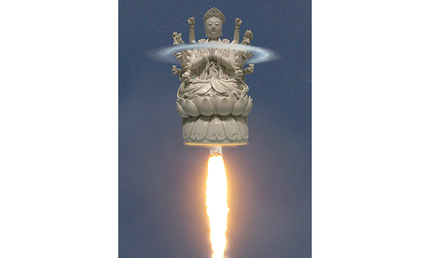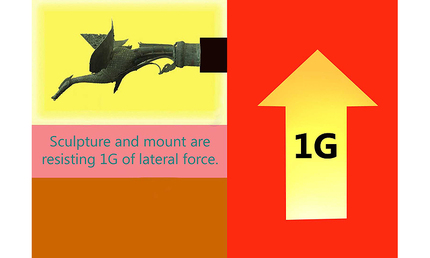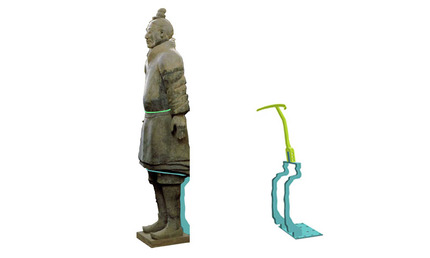Sep 20, 2013
Seismology and some of the basic laws of physics need to be considered for mountmaking in earthquake zones to create mounts that will effectively withstand a likely seismic event.
Mountmakers create discreet display armatures to exhibit sculpture. This is similar to the way a jeweler mounts a gem. In doing so we are often asked to defy gravity. That is actually the easy part; mitigating forces coming from all the other directions in space and time such as those generated by the occasional earthquake can prove to be even more challenging.
Isaac Newton, famous for his laws of motion, discovered that gravity was directly correlated to an object’s mass, the greater the mass, the more powerful the force of gravity. Upon closer examination it seemed to him that the effects of gravity were the same as those of inertia and acceleration.
What that means is that the earth is moving up towards us. It is coming up to us at a rate of 32 feet per second. The idea that the earth is accelerating up towards us sounds absurd.

But if we look at it through a specific reference frame or what physicists call an inertial frame that is exactly what is happening. As an example if we imagine this Guanyin sculpture in the weightlessness of space we can rocket it at a certain acceleration that for all evidence, intents and purposes would feel exactly like earth’s gravity. That arbitrary number is 32 feet per second squared, what we call one earth’s gravity or one “G”. We use this as a constant only because we are all familiar with it; we just need to do a couple of pushups to know exactly how powerful a force that is.

Another way to look at it is to imagine a sculpture mounted on the wall. In order for the mount to work in a severe seismic event with accelerations up to a “G” it would have to withstand this lateral force as seen in the diagram above.
The San Andreas Fault, which runs the length of California and delineates the boundary of the North American and Pacific plates, is located just offshore of the city about 8 miles from downtown where the Asian Art Museum resides. The Asian is close enough to the fault to receive accelerations over 1G in the event of a great quake such as the 1906 quake that devastated the city including the Civic Center and city hall.
In determining the probability of hazardous motion for our objects, we must also consider the building itself. Our building was retrofitted in 2003 with base isolators so that we would be able to decouple ourselves from the most severe ground motion.
The base isolators are able to mitigate the most severe ground motions. This does not mean that we do not have to make mounts for individual artworks, however we can make less intrusive mounts right here at the museum. Earthquakes still produce significant accelerations and the methodology requires anchoring all pedestals and objects stiffly.
When designing mounts for a warrior sculpture in China’s Terracotta Warriors exhibition, a broad piece of metal at the base and ankles was needed that was capable of withstanding a calculated moment force of over a ton. *Moment force is force acting at a distance such as a lever. The mount is tapered because the closer we approach the center of gravity the amount of mass to the center decreases. This enables us to create a more esthetically pleasing mount.
Additionally form fitting the mount helps to distribute the forces and aids in unifying the structure as a whole. This helps to avoid dangerous point loading on the sculpture, and to protect the fragility of the terracotta’s surface.

This is a very general summary about all that needs to be considered when making mounts in earthquake country. Geological environments, stable shape, anchoring formulas, and other concepts were all just touched on. We are working together with some of the best seismic engineers and museum specialists in the country in order to create and develop a functional evolving methodology to protect precious artifacts from the forces of nature that are essentially out of our control.
Read More:
Vincent Avalos, The Science Behind the Art of Making Mounts for Antiquities and other Art Objects in Earthquake Country. Asian Art Museum 2015.
Download the article